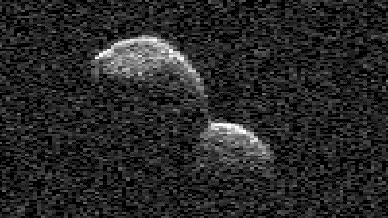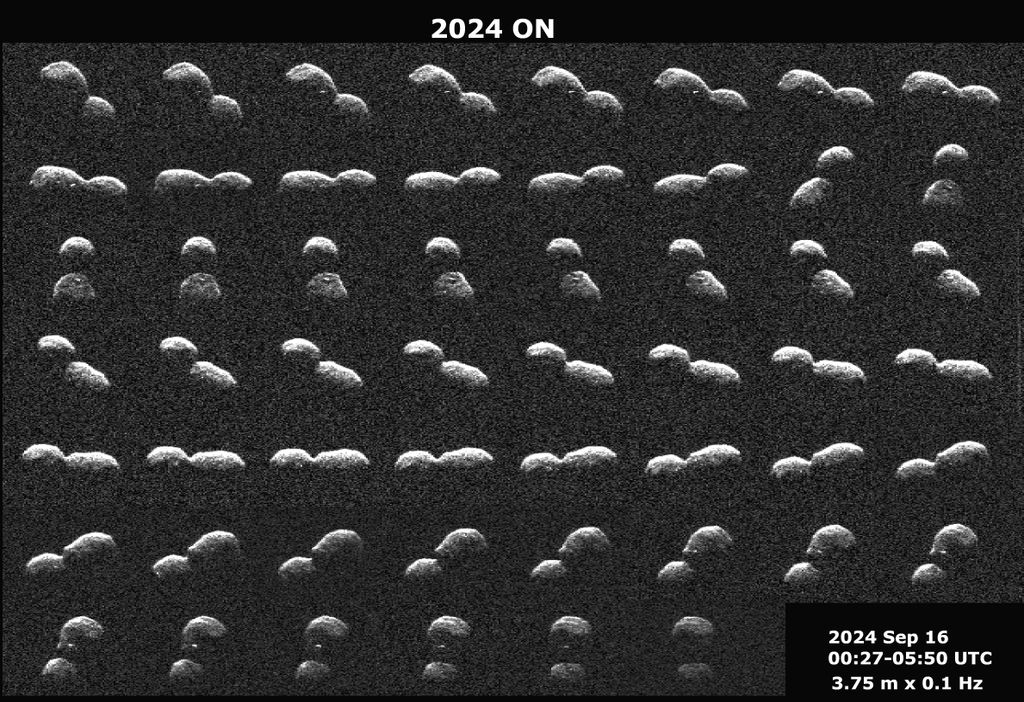The large asteroid that tumbled safely past Earth last week was, in fact, two asteroids melded into one object that resembles a snowman.
The asteroid, named 2024 ON, zipped past Earth on Sept. 17 at 19,842 mph (31,933 kph), which is roughly 26 times the speed of sound.
The space rock is huge — 1150 feet (350 meters) long, about the size of a skyscraper — but it safely floated past Earth at a distance of 620,000 miles (1 million kilometers), aka over 2.5 times the average distance between the moon and Earth.
Those recent images revealed the asteroid's peanut shape, formed by two smaller asteroids that, eons ago, floated so close to each other that they became gravitationally bound.
Ultimately, the two blended into one.
The conglomerate asteroid's "lobes" are separated by a distinct neck, with one lobe roughly 50% bigger than the other.
Scientists call such two-lobed asteroids "contact binaries," and estimate at least 14% of near-Earth asteroids bigger than 660 feet (200 meters) are of this type.
Source
The asteroid, named 2024 ON, zipped past Earth on Sept. 17 at 19,842 mph (31,933 kph), which is roughly 26 times the speed of sound.
The space rock is huge — 1150 feet (350 meters) long, about the size of a skyscraper — but it safely floated past Earth at a distance of 620,000 miles (1 million kilometers), aka over 2.5 times the average distance between the moon and Earth.
Those recent images revealed the asteroid's peanut shape, formed by two smaller asteroids that, eons ago, floated so close to each other that they became gravitationally bound.
Ultimately, the two blended into one.
The conglomerate asteroid's "lobes" are separated by a distinct neck, with one lobe roughly 50% bigger than the other.
Scientists call such two-lobed asteroids "contact binaries," and estimate at least 14% of near-Earth asteroids bigger than 660 feet (200 meters) are of this type.
Source























